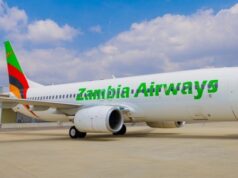
Today, almost 2,616 annual flights are operating between Africa and China . The good news is that the expansion of African carriers did not stop with China. It has now an impressive global footprint. Ethiopian Airlines, which has driven the expansion, has more than doubled its fleet in the last decade and operating a number of flights to China, while it didn’t have a single Africa-China route in 2010.
Aviation infrastructure is also catching up, no matter whether they are comparable with the best in the world. The Bole International Airport in Addis Ababa, has emerged as a hub with a new terminal this year, built by China for $363 million, tripling the airport’s capacity.
Be it investment in airports or in aircraft, airlines are optimistic about Africa’s air traffic growth. It’s easy to see why. According to the International Air Transport Association (IATA), Africa will witness an annual expansion of nearly 5% and will emerge as the fastest growing aviation region in the next 20 years or so.
Now the moot question is Africa ready to absorb this growth?
Indeed, at every Africa Summit , leaders wax eloquently on the crucial role of aviation industry to fuel Africa’s economic growth and the urgent need for making it state-of-the-art. The AU summit in January last year launched the Single African Air Transport Market ( SAATM ) with a target to speed up connectivity across the continent. Of course, the success of the much celebrated AfCFTA, which aims to create a single African market hinges critically on smooth connectivity.
To realise the full potential, Africa has to urgently address the aviation challenges. Weak infrastructure, poor connectivity and lack of privatisation are some of the hurdles that make air travel to and from Africa, and within awfully expensive. It is often cheaper to fly from an African city to a neighbouring city via London, Amsterdam, or Doha than to travel direct!
Many African countries restrict their airspaces to prop up state-owned and loss making airlines. Non-African airlines currently fly about 80% of intercontinental traffic to and from Africa. An IATA survey has rightly pointed out that if just 12 key African countries opened their markets and increased connectivity; an extra 155,000 jobs and $1.3bn in annual GDP would be created in those countries.
Happily, things are changing. Higher efficiency levels are being achieved by many of the carriers in the continent. Airlines of Ethiopia, Kenya, Tanzania, Rwanda etc are taking significant steps to spread their wings. Air travel within the continent will get a lot easier as it emerges as a major global economic power house. Moreover, Africa continues to draw investments, which makes the growth in aviation inevitable. Several prominent and forward-looking African airlines are proactively pursuing aggressive investment and well-thought of growth strategies. For example Ethiopian Airlines has recently introduced visa on arrival. More flight routes are also opening within the continent and to international destinations like US, India, Japan etc.
If African economies want to be competitive, they better let go the state monopoly on national airlines, and liberalise the sector. With open skies, public-private partnerships for airport infrastructure and operations and visa liberalisation, African aviation can certainly scale high.




